FLASHBACK! MEN AT WORCS: FACTORY OFF-ROAD RACER FOR A DAY
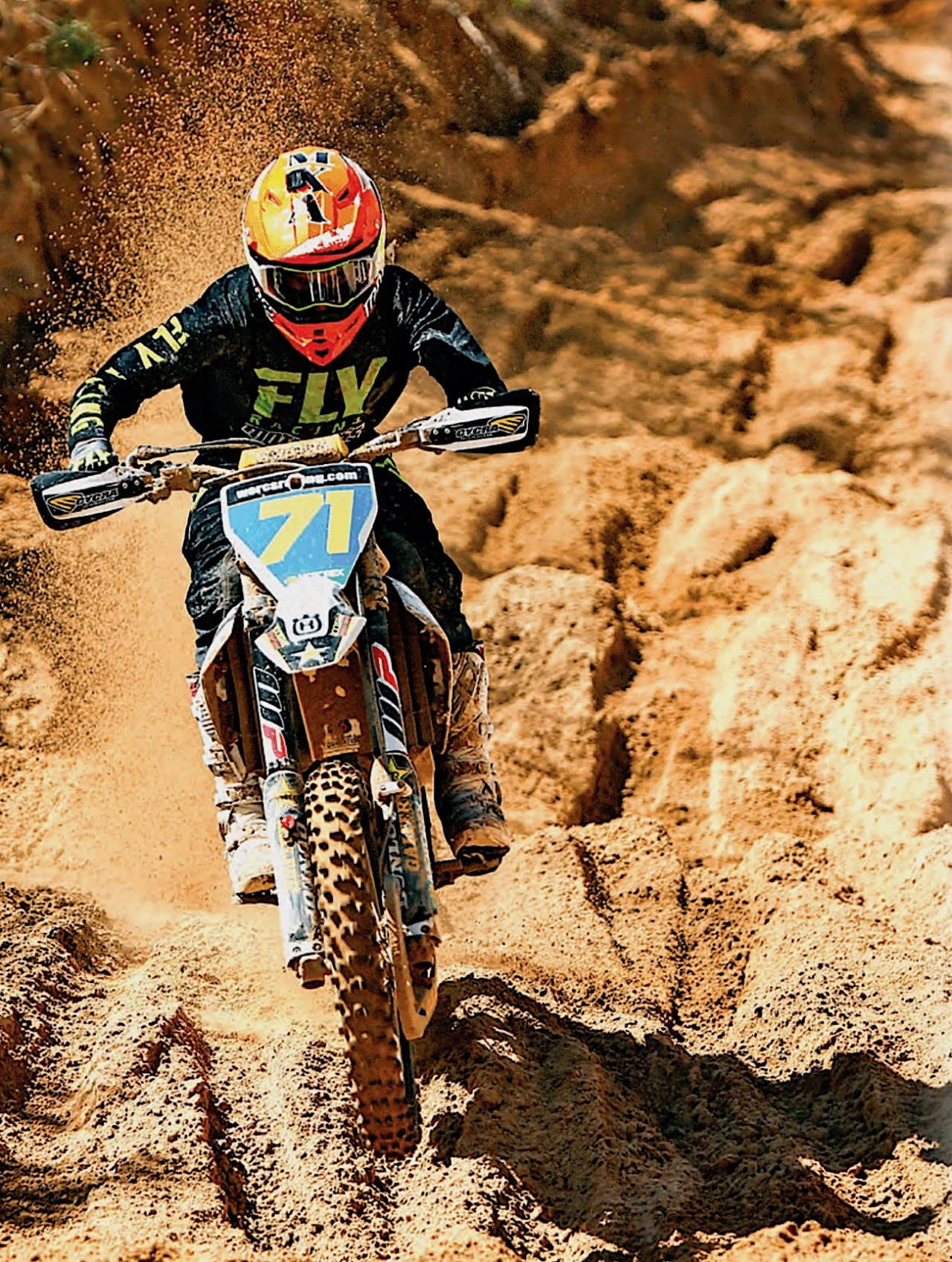 MXA ADVENTURE: FOR AN AMA NATIONAL PRO, I HAD A LOT OF OFF-ROAD RACING EXPERIENCE —IF YOU THINK THAT TWO OFF-ROAD RACES IS A LOT.
MXA ADVENTURE: FOR AN AMA NATIONAL PRO, I HAD A LOT OF OFF-ROAD RACING EXPERIENCE —IF YOU THINK THAT TWO OFF-ROAD RACES IS A LOT.
By Josh Mosiman
Photos by Harlen Foley, Ashley Mosiman, Andrew Short and Michael Lindsay
I had a lot of different feelings throughout the experience of being a factory Rockstar Husqvarna off-road rider for a weekend. I knew I was unprepared. But even though no one at the Husqvarna team had expectations for me to produce a great result, I still wanted to do well. The funny part is, I probably did better with almost no preparation than if I had gone into full-race mode and started training months prior to the event. When I was racing the AMA Nationals and Supercross series full-time, I usually did better when there was less pressure and I was having more fun. I think this is true for most athletes. My preparation coming into the event was just a few extra days of riding at a local sand track and going for a run and hitting the gym five times before race day. It wasn’t exactly what my body needed, but hey, it was better than nothing! With my responsibilities at MXA, I’m fortunate to be able to ride and test often, but riding and racing is the fun part of the job. What no one sees is that MXA guys have their hands on a computer more than on the handlebars. My plan was to rely on the strength and endurance that I built while racing in 2018, before getting injured at the 2018 Glen Helen National. Since then, I spent most of my time rehabbing my shoulder, not training. I was so excited to race the Lake Havasu WORCS race that I told everyone that I came into contact with about it. Most of my friends gave me a funny look when I said that I was going to be racing on one of the toughest tracks on the West Coast for two hours straight—and that I hadn’t been training. When they questioned my sanity, my response was always that my lack of preparation was what made it fun.
What is WORCS? WORCS stands for World Off-Road Championship Series, and it’s the premier off-road racing circuit on the West Coast. The Lake Havasu round is known to be the roughest race of the series and the most like a motocross track in comparison to other WORCS races. The event has classes for every level of rider skill, from Beginner to Pro. The only difference is that the amateurs run as little as 25 minutes, and the Pros run for two hours. Located just outside of downtown Lake Havasu City, the track is short compared to the rest of the WORCS rounds. This year the lap times ranged between five and six minutes for me, while the winner, Taylor Robert, was able to maintain close to five-minute lap times for the entire two hours.
As WORCS tracks go, this one was very unique. The first portion of the track is called the “motocross section” and holds the start straight, a few small jumps and some bermed corners. The dirt on this portion of the track is hard packed with lots of rocks. This is the faster part of the track. You really have to be careful not to stay in the wake of the rider in front of you for too long, because the roost hurts. The rest of the track is sand, as it weaves through small hills and goes right up next to the lake. The course layout put us on the beach of Lake Havasu three times, and we hit the famous Lagoon jump over the water as well. The corners offered lots of different line options, as you could sweep back and forth from inside to out or outside to in. Another unique twist for the Pro class was the dead-engine start. This part was tough for me, even though all I had to do was push a button.
I KNOW I GOT THE FACTORY HUSQVARNA INVITATION TO RACE AT LAKE HAVASU BECAUSE I WORK FOR MXA, BUT IT DIDN’T THAT I HAD RACED HUSQVARNAS IN THE AMA 250 WEST AND 450 NATIONALS.

Timmy Weigand was nice enough to let Josh break in the new bike and test suspension with Colton Haaker and the team before the race.
As far as AMA National motocross racers go, I had a lot of off-road racing experience—if you think that two off-road races is a lot. My first time was at the exact same Lake Havasu WORCS race back in 2016. I was still an Amateur back then, and I was training to make my professional debut at Hangtown just a few months later. My friend Eric Yorba convinced my buddy Carlen Gardner and I to go racing with him. I was unprepared when I did the race in 2016, and I still ended up doing pretty well. It had been three years since then, and my selective memory had forgotten how much I suffered in that race. I only remembered the fun parts.
I was very excited when Timmy Weigand, the Rockstar Husqvarna team manager, invited me to join the guys for a suspension test day on the Tuesday before the event. My friend Leon Hanson is the WP Suspension tech who works directly with the Rockstar Husqvarna team. He built me a set of suspension with the same specs as Andrew Short (with my weight in mind). In order to get prepared for the sand in Lake Havasu, Timmy Weigand had scheduled the test day at the roughest sand track he knew of in the SoCal desert. Leading up to the test day, I spent some extra time on MXA’s 2019-1/2 Husqvarna FC450 Rockstar Edition to get acclimated. When I got on the Husqvarna factory bike, I immediately noticed the extra weight of the oversized tank, but then I noticed how smooth the power delivery was. Usually, when you think of a factory 450, you think of an engine that is crazy fast and difficult to hold on to, but that wasn’t the case—and I loved it! Comparing the power delivery of two bikes, the new 2019-1/2 Rockstar Edition felt like it had a quicker response as soon as you cracked the throttle, while the factory bike rolled on slower off the bottom end but was faster on top, plus it never wanted to stop pulling.
On my first three laps of riding the factory bike at the test day, I got arm pump. I thought, “What did I get myself into?” The arm pump came from the imaginary pressure I had put on myself to perform. Timmy made it clear that there weren’t any expectations on me from the Rockstar team, and I didn’t have any from my bosses at MXA. But, I had some serious nerves going. Who wouldn’t? I was riding on factory bike, in front of the Husqvarna team manager. I was riding with Colton Haaker, and in a couple days Andrew Short and I was going to line up to race the Pro class against some of the best off-road racers in the world. I was excited and nervous, but it was all in my head. I had to laugh at myself for it.
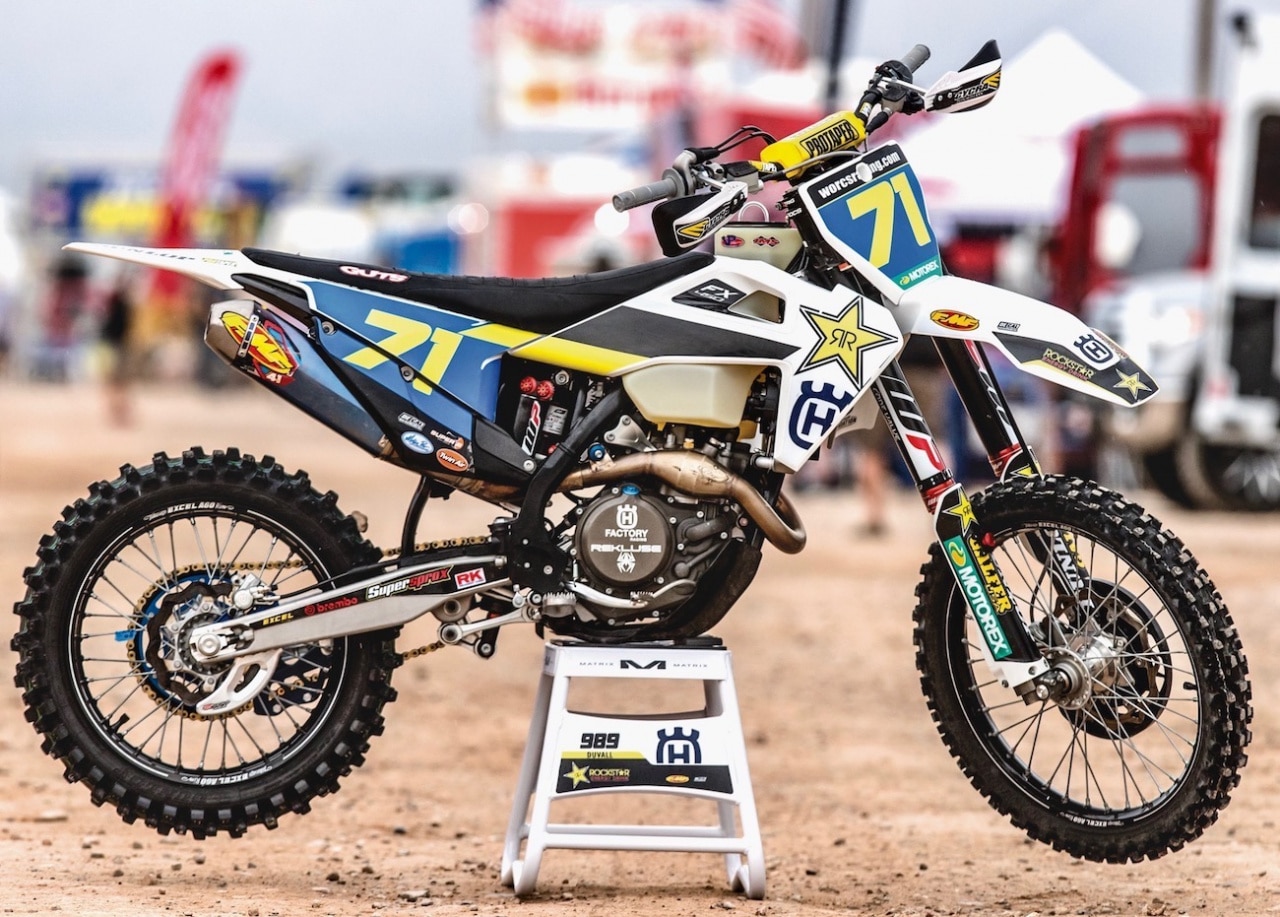
Getting a day of testing with Husky was manna from heaven. The bike was comfortable, but the extra weight of the oversized gas tank, and the mousse tubes made it harder for me to lean into the corners. First, Husky dropped the forks so they were flush with the triple clamps, which put more weight on the rear end. It felt better, and we kept on testing. Leon took the forks off and stiffened the spring rate in the WP cone valve forks from 4.8 to 4.9 N/m. These two changes helped a lot. After that, the only changes we made were switching the kill switch and electric start buttons back to their normal positions and adding a Guts winged seat cover. From there, I stopped adjusting the bike and turned my focus to dialing in my technique and doing sprint laps to get my intensity up for the weekend. Because of my sudden case of arm pump and my lack of training, I tired out quickly. But how often do you get a chance to ride a factory bike? Tired or not, I was going to ride for as long as they had gas.
I know I got the invitation to race for the factory Husqvarna team at Lake Havasu because I work for MXA, but what sealed the deal was that I had raced Husqvarnas in the AMA 250 West Supercross series and 250 Nationals in 2016-2018. Husky didn’t cut any corners on my “factory rider for a day” deal. The bike they let me race was brand new. I was the first one to ride it on the test day. I truly got the full factory experience. The engine was built in the Husqvarna Engine department, which is best known as Factory Services. This is the department that builds Jason Anderson and my brother Michael’s engines. When I asked Timmy about the engine package on the off-road bikes, he explained that they are very similar to an outdoor National engine but with minor character variations. The off-road engine is built to withstand the elements and finish every race. The engine was designed to be usable, with a smooth roll-on power delivery so the rider can take advantage of the engine’s power without ripping his arms off or getting worn out on the first lap. The WORCS engines are removed and serviced every 20 hours, which is usually after five rounds of racing.
A close look at the Josh Mosiman Replica Husqvarna FC450 off-road machine revealed 48mm WP Cone Valve forks and a WP Trax shock (set up specifically for me by WP suspension). For Havasu, we ran Dunlop’s MX33 tires on an 18-inch rear wheel. The team uses an XC1 data logger to keep track of the engine’s temperature and to monitor how it’s running so they know exactly when the engine needs to be serviced. It’s also used to keep track of how quickly the electric starter fires up during the dead-engine starts. If the rider has a bad start, the data logger can see if it was because of rider error or bike error. My race bike also had a wide variety of aftermarket parts and custom gadgets that helped make it more durable for the extreme torture it experiences in an off-road race. These items include oversized radiators (with a fan), a TM Designworks factory edition #2 chain guide and chain slider, a Bullet Proof Designs reinforced swingarm protector, Supersprox Stealth steel/aluminum rear sprocket, RK rivet link O-ring chain, shark fin to protect the rear brake rotor, Galfer Wave rotor, factory Husqvarna carbon fiber front brake rotor cover, IMS oversized tank (that wasn’t any wider than the stock tank), IMS pro-core enduro footpegs and Dunlop FM18 mousse tubes.

The most interesting piece on the bike was a filter in the middle of the long breather tube that came out of the head. This aftermarket filter, like many of the other parts, was added for precautionary measures. It keeps water, sand and mud from being sucked into the engine. The bike also had a brake snake, a KTM Power Parts twist-connect fuel line that ensures it never pops off, windowless rear brake master cylinder, silicone covers in the axle and shift lever holes, billet throttle housing, a Motion Pro Titan throttle tube (that never breaks when crashing, which I tested twice in practice) and electric start and kill switch wires that are covered by a heavy-duty, braided sleeve.
I’m the kind of racer who likes to get to the track as early as possible, so I showed up in Arizona on Thursday. My friend Michael Del Fante gave me a ride to Lake Havasu in his motorhome. Michael and his parents took awesome care of me as I showed up with limited food and supplies for the weekend. I even spent Thursday night in their motorhome. I was glad that there was a Friday practice day. It wasn’t the full track, only the rocky motocross portion of it. The week prior to the event, Timmy gave me the option to show up a day early and practice on the abbreviated track—or skip it and only ride the 30-minute practice and 45-minute qualifying sessions on Saturday, which would be on the full track. Originally, I thought it would be better to skip Friday and save my energy for the race, but Timmy explained that Andrew Short was going to be there on Friday so that he could get extra time in on the track. I didn’t think the extra riding would help my results. If anything, I thought it would hurt me by making me more sore for Sunday, but I wasn’t going to turn down the opportunity to ride the factory bike for an extra day, especially if my teammate was going to be there. Plus, on Friday I got to meet the Rockstar Husqvarna off-road mechanics. Joseangel Cordova and Tanner Tremaine were really cool. Joseangel is new to the team, but I knew him from when he worked for other riders during my privateer days. Now he’s with the Rockstar team as Andrew Short’s mechanic. Tanner is normally a mechanic for GNCC rider Thad Duvall, but for this weekend he was working with Colton Haaker. As luck would have it, he’d soon be my personal mechanic.
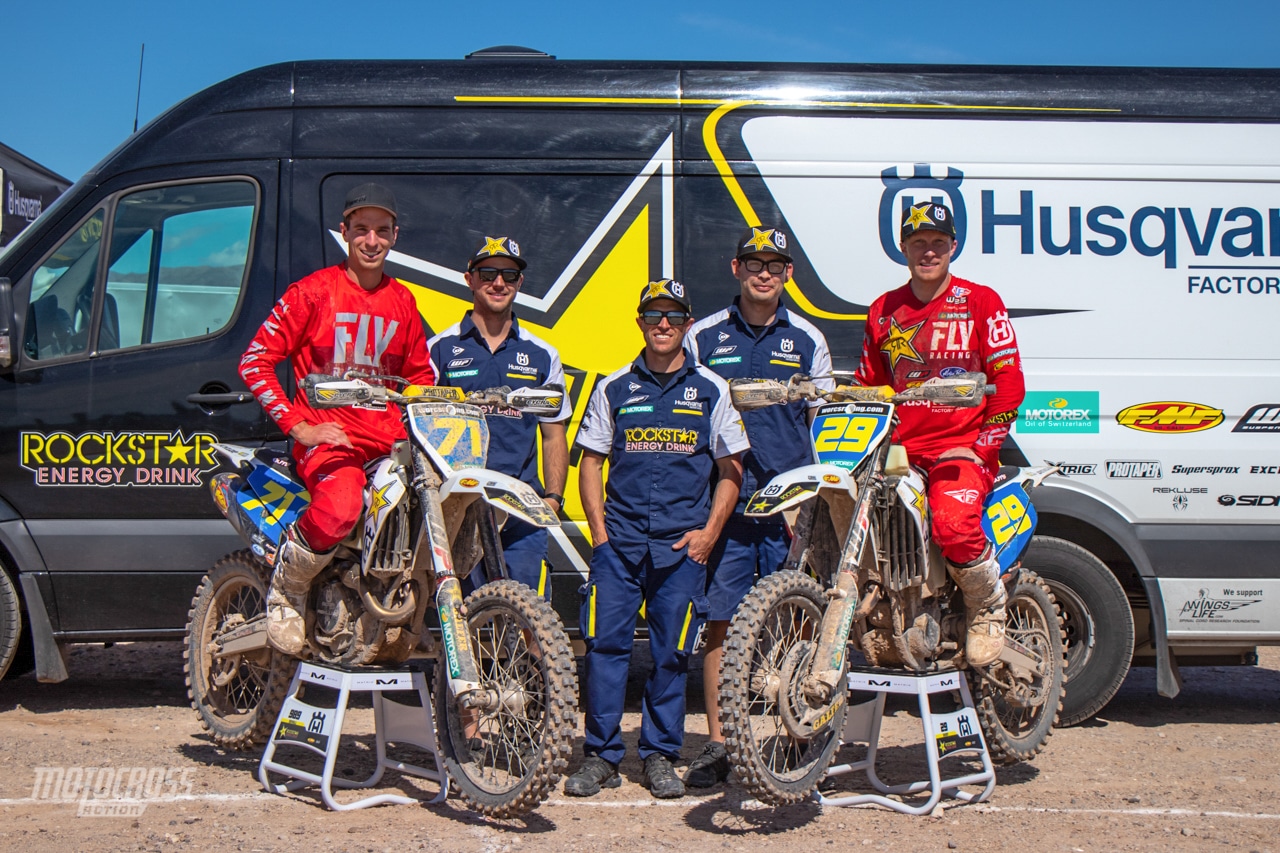
On the first lap of Friday’s practice, I flashed back to how rocky the WORCS course was the last time I raced at Lake Havasu. In some corners my tires were sliding on the rocks instead of gripping into the dirt. I was still on the first lap when a guy blew by me and roosted a huge rock to my head. It cracked my visor and pushed it straight up. I was glad that it didn’t hit me anywhere else. After the first practice, Andrew talked about how happy he was to be there on Friday to get accustomed to the unique Lake Havasu dirt. I agreed, even though the rock to the head had me hedging my bets. The whole Husqvarna team treated me as an actual team member. They didn’t cut any corners when preparing my bike, and they even washed my boots. After practice on Friday, Andrew invited me to walk the rest of the track. To tell the truth, I didn’t think it was necessary to walk the entire 3.2-mile course, since we would be able to practice the complete race track the next morning. But, I was honored that Andrew invited me to walk it with him. I wasn’t going to turn down that opportunity!
It turned out that walking the track was worth the effort. As the course approached the lake, Andrew and I came across a technical section that consisted of a sharp right-hand corner, a steep little hill, and a dropping lefthand turn down the backside. This corner just popped out of nowhere. There was no warning about the uphill corner on the other side of the hill, so we were happy that we saw it before we came around for our first lap of practice on Saturday. Unfortunately, Colton Haaker wasn’t there to walk the track with us on Friday. On the first lap of Saturday’s morning practice, I was right behind Colton when we came up to the spot that Andrew and I had noted the day before. Suddenly, I wished that I had been in front of Colton to slow him down. As he went uphill, I heard him blip his throttle to jump to the landing on the backside, but I knew there was no landing on the backside, just a sharp corner. I had a first-class ticket to watch the action. Luckily, Colton was able to pull his bike out of the bushes. The Saturday practice session was the first chance to learn the full course. I took the opportunity to try some dead-engine starts, and they were a train wreck! The key to a successful dead-engine start is to keep from twisting the throttle until your bike is started, but it’s not as easy as it sounds. Andrew and the guys had a good laugh at my struggles.
By the time we came out for the afternoon qualifying session, the track was a whole other animal. The sand rollers were huge, and it was impossible to find a smooth line. I went slow on the first lap to save my energy. Then, on the second lap, I went all out. With my lap time being over five minutes, it was a long sprint. It was quite a bit more than the one-minute Supercross qualifying laps or the two-and-a-half minute outdoor qualifying laps that I was more accustomed to. I was pushing hard until I was almost to the finish line. With about 30 seconds to go, I was breathing heavily with some major arm pump when I fell in a turn, right before the lagoon jump. As I was falling, I was thinking to myself, “I can’t waste this lap. Get up and get going!” After I finished the lap, I pulled off in the mechanics area to catch my breath. I knew the best thing to do for arm pump would be to continue riding, but still I pulled over to talk with Tanner and Jose. To my surprise, they told me that my lap time put me in sixth overall. I was completely blown away. I thought I was Superman for a moment. My confidence soared. After cruising for a lap, my arm pump went away and my energy came back to me. I put in another fast lap, this time without the crash. I was thinking it was going to be a good one. I was wrong. Yes, I improved my time, but so did everybody else. I qualified ninth. My time was 25 seconds slower than Zach Bell’s and fast qualifier Taylor Robert. I was 11 seconds behind Andrew and only 0.2 seconds better than my friend Michael Del Fante. Unfortunately, Colton Haaker had a hard crash that tweaked his back and took him out for the weekend. After qualifying, Andrew said multiple times that it was the roughest race track that he’d ever ridden. I was surprised to hear that from him, as he has ridden many different tracks over the years, but, at the same time, I had to agree. It was brutal.
It all got real on Sunday. My wife Ashley woke up early on Sunday and drove four hours from Southern California to Arizona to watch me race. She showed up just 20 minutes before I went to the starting line. Because Colton wasn’t racing, Tanner would be my mechanic for the day, and that let Timmy off the hook. Because the track was so rough, Andrew didn’t want to carry any extra weight on his back, so he decided not to run a hydration pack. Instead, his mechanic Jose handed him water bottles with long rubber straws as he rode through the pit area. These bottles were super cool. Once you put the straw in your mouth, you could carry the bottle with you around the track, holding the straw in your mouth with your teeth. Unfortunately, I didn’t know this was a thing, and every time Tanner handed me a bottle, I would hold it with my left hand as I rode through the pit area, and then throw it before I got back on the track. After the race, Tanner admitted that he felt bad for me and wished he had told me that I could carry it in my mouth. Before the race, I debated if I should wear my hydration pack or not. My thought pattern was that the extra weight would be harder on my arms and make me more tired. But in the end, I decided to wear it. By the time I was 30 minutes into the race, I knew I had made the right choice. The USWE hydration pack I wore fit really well and didn’t weigh me down like I expected it would.
I had only done three dead-engine practice starts, and obviously I didn’t learn anything from them. When the flag fell for the start of the 2019 Lake Havasu WORCS race, I was one of the last guys to the first turn. I spent the first two laps passing my way up to seventh place. I pushed at a good pace for the first 25 minutes, and then I started to feel some fatigue. At that point, I tried to find a pace I would be able to maintain for two hours. I knew it was going to be hard, but I vowed that no matter what happened I was going to finish. Pride is a powerful force, so even though I wanted to pace myself, I also wanted to at least look like I was going fast. I battled with my friend Michael Del Fante early on, and we rode together for the first hour. The mechanics were showing me that I was in seventh place on the pit board, and I was stoked! I really wanted to hold on for a top-10 finish.
Coming up on the halfway point, I was tired, but it wasn’t as bad as I expected. I pulled in for my pit stop, and it went smoothly. While Tanner filled my bike with fuel, Jose handed me a fresh pair of Scott goggles. As I drank my electrolyte-mixed water bottle, I sucked half of a dark chocolate/coffee gel pack that Andrew gave me right before the race. The whole pit stop took 20 seconds. It was actually pretty fun. It was weird to have the chocolate coffee taste in my mouth as I rode back on the track, but I was glad to try anything that might give me energy. After halfway, Del Fante got around me, but it wasn’t without a battle. I rode the bike wide for about half of a lap, hoping that my roost would discourage him from staying so close behind. But, he eventually got around and rode away pretty easily. He’s super strong, and it definitely showed in the final hour of the race.
My suffer-fest really started in the last hour after my final pit stop. Every time I would take a sip of water, my stomach would hurt. Apparently, my gut didn’t like processing water as it was getting bounced around through the whoops. My hands also began to hurt just past midway in the two-hour race. It was unlike anything I’ve felt before. My hands went from perfectly fine to agonizingly painful within one lap. That must have been the moment that the blisters had been torn off my palms. I wished I was wearing under gloves or catcher’s mitts on my hands. Around the same time my hands started hurting, I also hit my first “wall.” I had to dig deep to find the motivation to keep going.
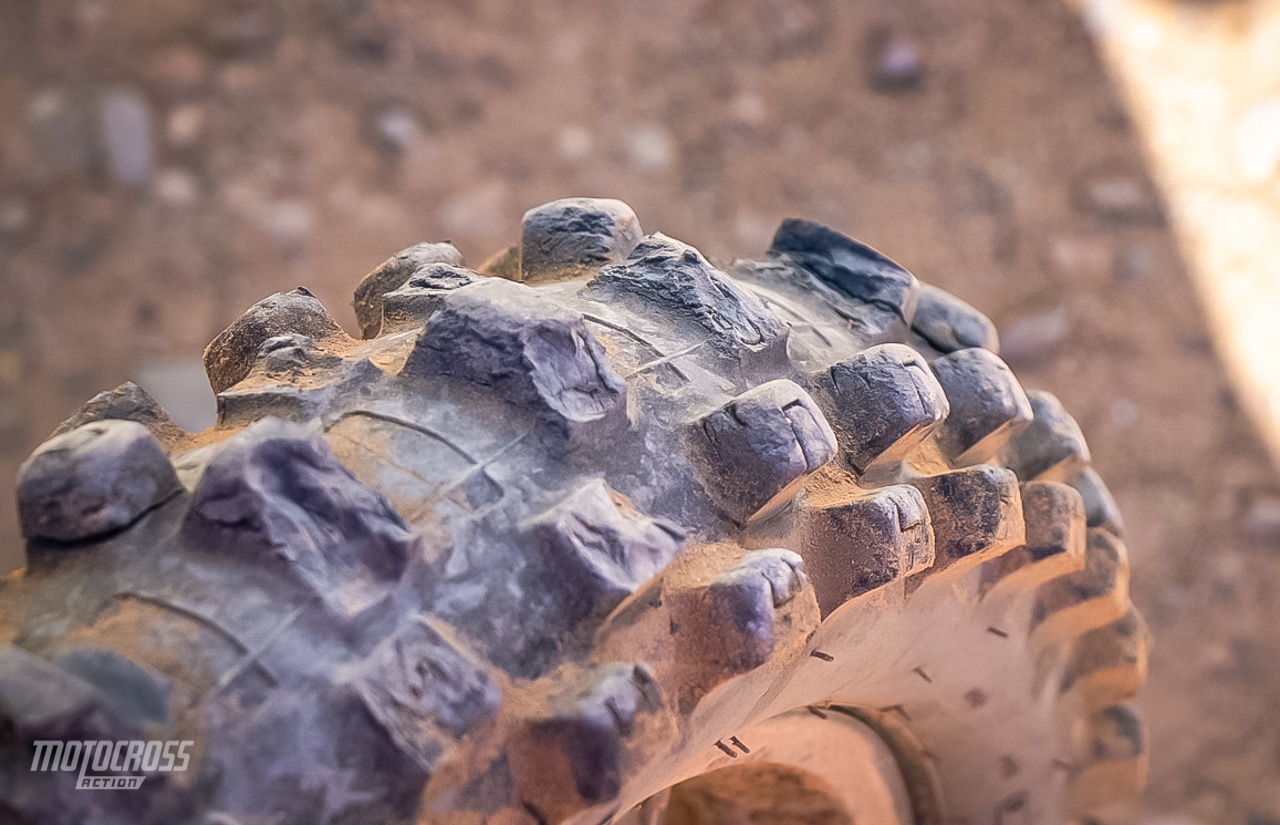
I started thanking God for the ability to ride a dirt bike and to get to ride such a nice factory bike. Then I started thinking about how nice the bike was and about how sad I would be when the race was over and I wouldn’t be able to ride it anymore. Those thoughts definitely helped. Instead of begging for the checkered flag, I was trying to enjoy my last laps on the Husqvarna factory bike. I also got smarter with my technique. I found a few corners where I could catch my breath. I also started letting go of the bars over the jumps. I remember that years ago someone told me that reaching up and grabbing your helmet’s chin bar would relax you. I would have grabbed barbed wire at this point if it got me to the finish.
My conservative approach had dropped me back, and within two laps, a Honda rider caught up to me. I didn’t recognize the guy, but I could see that he didn’t have Pro-class-required blue number plates. He had white backgrounds. Even though I didn’t know which class he was in, I hadn’t gone this far to get passed with only 10 minutes left. I picked up my pace and so did he! At this point, my hands were torn up, my stomach was in knots and the track was brutal. When he got next to me over the water jump on the outside of the next corner, I held my line and kept him from getting by. I finished eighth place in the Pro class, and I pushed all the way to the end. Later I found out that he wasn’t in my class, but I was still glad that he made me push until the checkered flag, because that was how I knew that I had left everything out there on the track. I didn’t hold back and made the top ten.
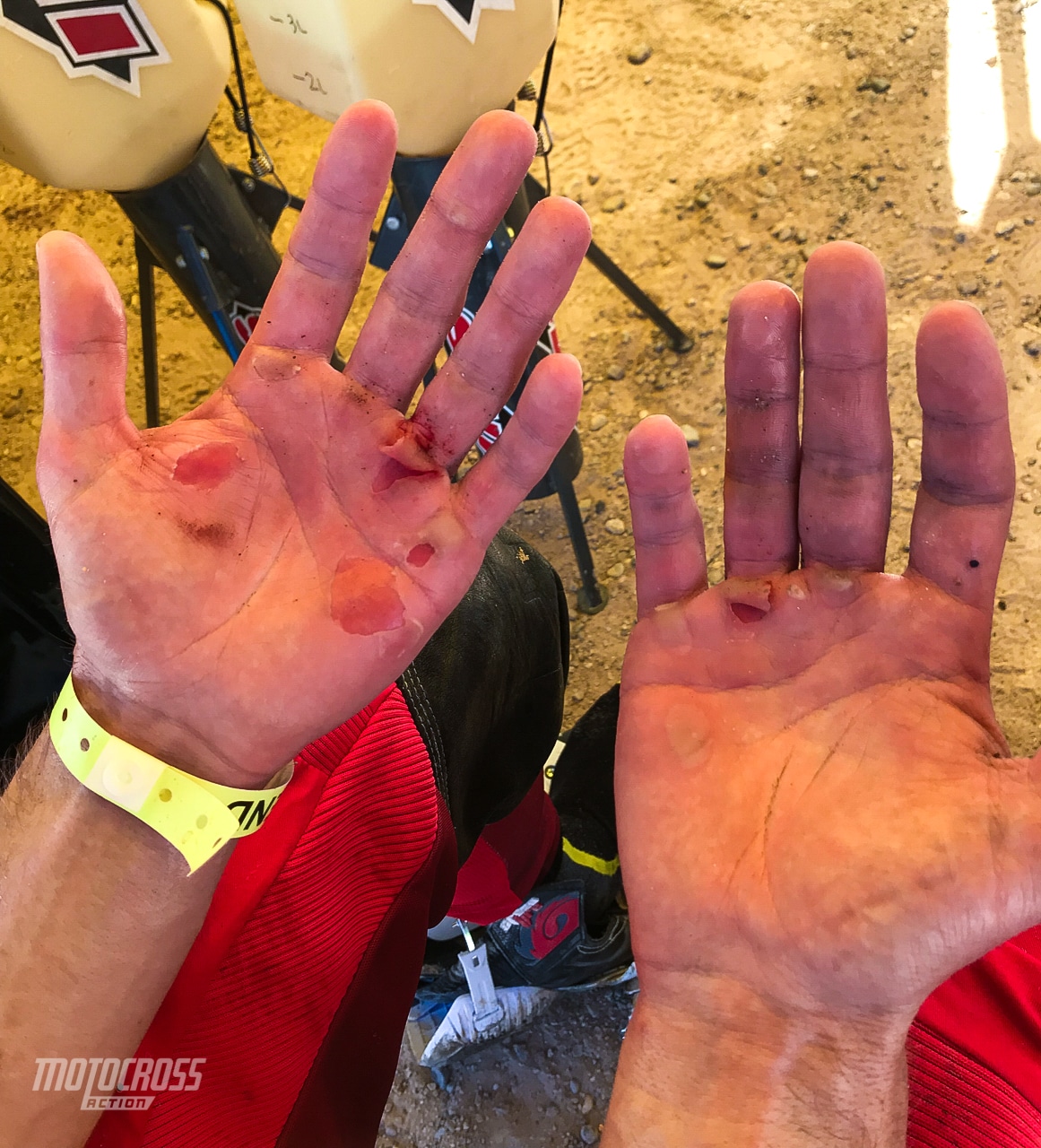
I REMEMBERED THAT YEARS AGO SOMEONE TOLD ME THAT REACHING UP AND GRABBING YOUR HELMET’S CHIN BAR WOULD RELAX YOU. I WOULD HAVE GRABBED BARBED WIRE AT THIS POINT IF IT GOT ME TO THE FINISH.
After the race, my body was completely spent. I was proud of myself, and everybody else was proud of me, too. It was fun to debrief with Andrew one last time and take a group photo with the team. I was glad that Ashley drove out for the day to watch, because she drove me home on Sunday night.
When I got home, MXA’s Daryl Ecklund, who had raced WORCS events after he retired from the Nationals, called and said, “Meet Jody and me at Milestone on Tuesday. We have a couple of bikes for you to ride for the videos and action photos.” Luckily, he was just joking.



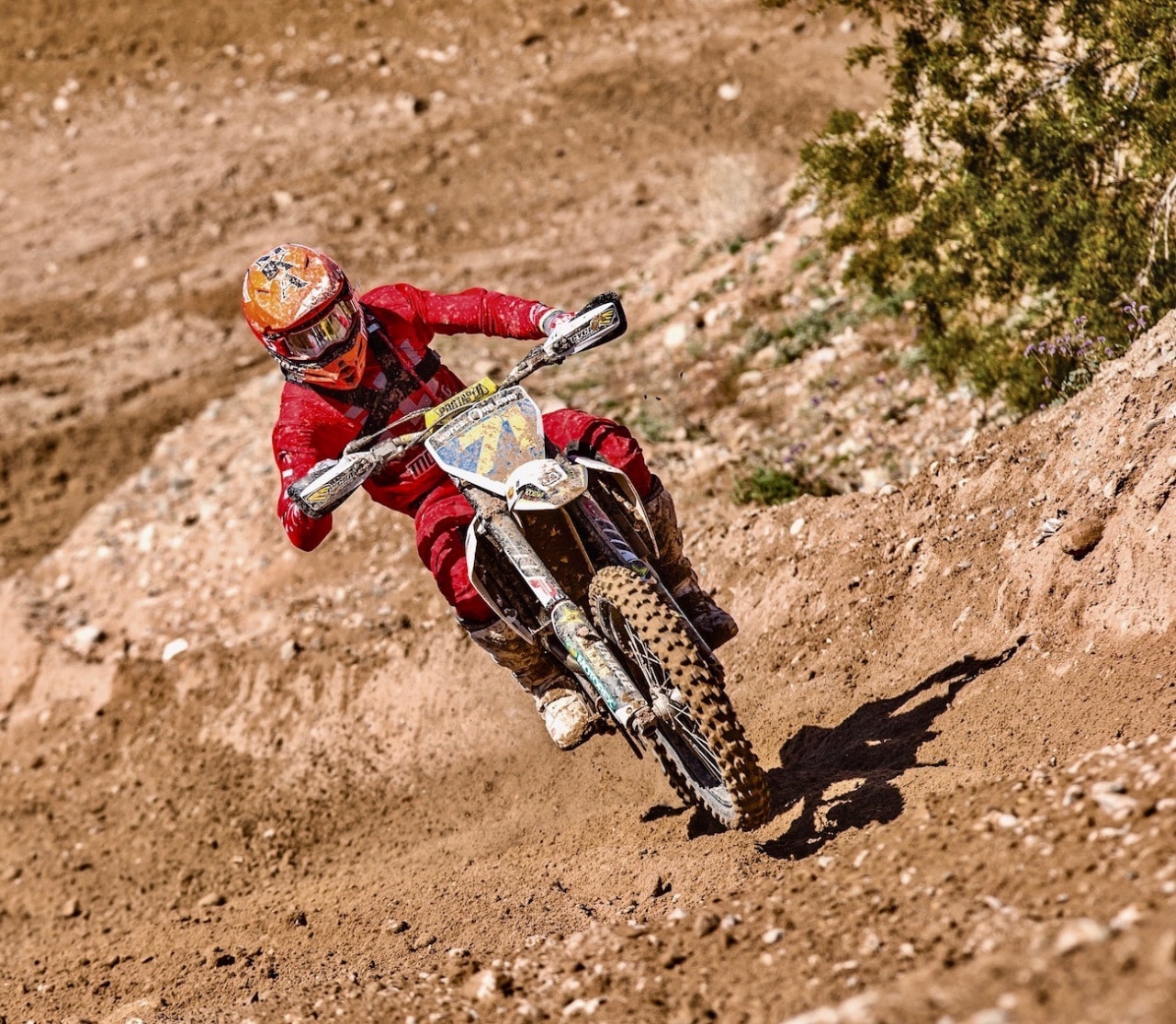



Comments are closed.